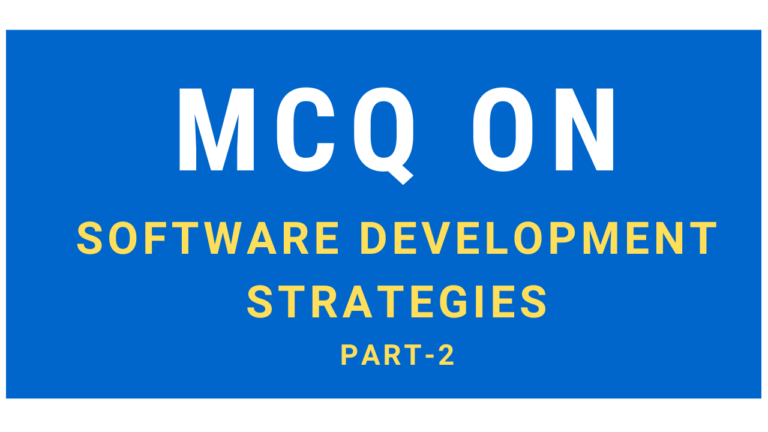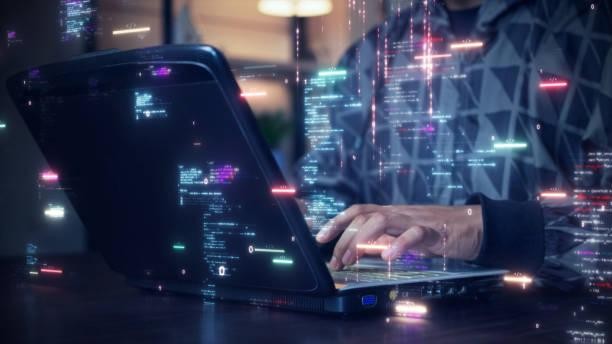1. The ……………… uses a team oriented model that focuses on enforcing the use of theoretically sound engineering processes and practices.
A) clean-room model
B) capability maturity model
C) prototyping model
D) spiral model
2. The ………………. focuses on management of the entire development environment or process in a team or organized context, emphasizing “process management and the principles and practices associated with software process maturity”.
A) clean-room model
B) capability maturity model
C) prototyping model
D) spiral model
3. The testing process in ……………………. is intended to demonstrate the validity of the system under expected usage, rather than to detect and remove defects.
A) clean-room model
B) capability maturity model
C) prototyping model
D) spiral model
4. ……………………. diagrammatic models or tools are used to define the objects, their properties and relations.
A) Static UML
B) Dynamic UML
C) UML sequence
D) Hybrid UML
5. …………………….. diagrammatic models or tools are used to define the states of the objects, their state transitions, event handling and message passing.
A) Static UML
B) Dynamic UML
C) UML sequence
D) Hybrid UML
Read Also: MCQ Questions On Software Development Strategies Part-1
6. ……………….. diagrams are used to illustrate the interactions between objects visually.
A) UML collaboration
B) UML sequence
C) System sequence
D) UML activity
7. …………………. diagrams are used to illustrate the interactions between objects arranged in a time sequence and to clarify the logic of use cases.
A) UML collaboration
B) UML sequence
C) System sequence
D) UML activity
8. A ………………….. diagram is a visual illustration for the system responses in the use case for a scenario, which describes the system operations triggered by a use case.
A) UML collaboration
B) UML sequence
C) System sequence
D) UML activity
9. ………………….. diagrams are used to understand the logic of use cases and business processes.
A) Traditional state machine
B) UML sequence
C) System sequence
D) UML activity
10. ………………. diagrams illustrate the behavior of an object in response to events and as a function of its internal state.
A) Traditional state machine
B) UML sequence
C) System sequence
D) UML activity
11. A/An …………………… makes a detailed review of all existing business applications with respect to their longevity, size, maintainability and critically.
A) reverse engineering
B) forward engineering
C) inventory analysis
D) data engineering
12. …………………. refers to the attempt to extract and abstract design information from the existing system’s source code.
A) Reverse engineering
B) Forward engineering
C) Inventory analysis
D) Data engineering
13. ……………… refers to the use of the process results or products from the reverse engineering phase to develop the new system.
A) Reverse engineering
B) Forward engineering
C) Re-documentation
D) Data engineering
14. ………………… uses the information about the system’s scope and functionality provided by the inventory analysis.
A) Reverse engineering
B) Forward engineering
C) Re-documentation
D) Data engineering
15. …………………… refers to translation of the current model to the target data model.
A) Reverse engineering
B) Forward engineering
C) Re-documentation
D) Data engineering
16. …………………… creates new system documentation from legacy documentation according to an appropriate documentation standard.
A) Reverse engineering
B) Forward engineering
C) Re-documentation
D)Re-structuring
17. ……………….. transforms the structure and source code for the system while preserving the system’s external functional behavior.
A) Reverse engineering
B) Forward engineering
C) Re-documentation
D)Re-structuring
18. State whether the following statements about re-engineering are True or False.
i) The advantage of re-engineering is that it can reverse aging symptoms.
ii) Re-engineered components can be constructed through the application of an externally provided re-engineering service.
A) True, False
B) False, True
C) True, True
D) False, False
19. The ……………………. phase of rational unified process model defines the vision of the actual use end product and the scope of the project.
A) inception
B) construction
C) transition
D) elaboration
20. The ………………. phase of rational unified process model builds the product, modifying the vision and the plan as it proceeds.
A) inception
B) construction
C) transition
D) elaboration
Answers
1. A) clean-room model
2. B) capability maturity model
3. A) clean-room model
4. A) Static UML
5. B) Dynamic UML
6. A) UML collaboration
7. B) UML sequence
8. C) System sequence
9. D) UML activity
10. A) Traditional state machine
11. C) inventory analysis
12. A) Reverse engineering
13. B) Forward engineering
14. A) Reverse engineering
15. D) Data engineering
16. C) Re-documentation
17. D)Re-structuring
18. C) True, True
19. A) inception
20. B) construction









